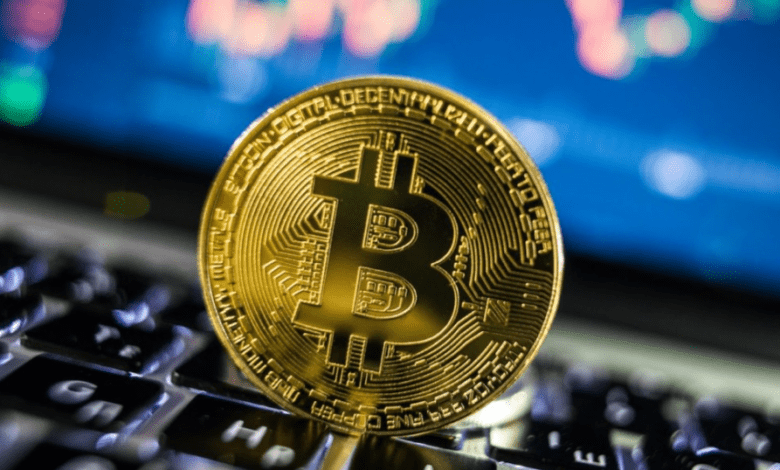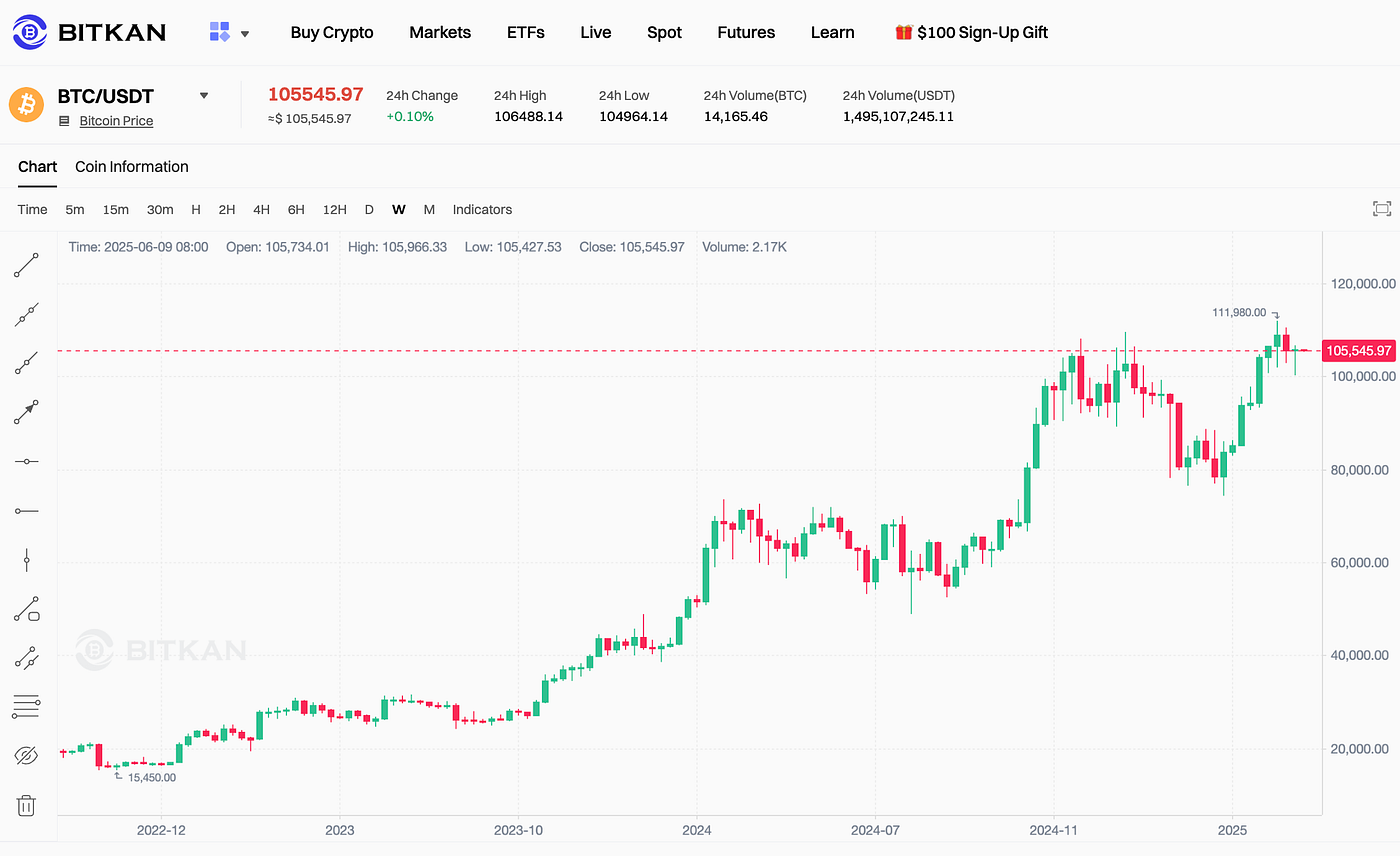In a remarkable twist to the ever-dynamic world of cryptocurrency, Bitcoin today hovers around the $94,000 mark, a level that would have once seemed impossible just a few years ago. However, this price peak isn’t being celebrated with the usual fanfare. Instead, a fog of economic uncertainty and looming trade tariffs has dulled market enthusiasm. The digital asset, which has long been hailed as a hedge against inflation and global financial instability, is now facing headwinds from the very market forces it was designed to withstand.
Bitcoin’s Meteoric Rise to $94,000
Bitcoin’s journey to this milestone has been nothing short of extraordinary. From its humble beginnings in 2009 when it was valued at mere cents, Bitcoin has grown into a trillion-dollar asset class. The current valuation at $94,000 is the result of a complex interplay of factors: increased institutional adoption, broader retail investor interest, supply scarcity due to the halving mechanism, and growing awareness of Bitcoin’s potential as digital gold.
However, the surge to $94K is now being met with a wave of caution, not exuberance. Market sentiment is being dampened by global economic developments, including rising trade tensions and inflationary pressures that are shaping investment decisions in a more conservative manner.
Economic Jitters: A Double-Edged Sword for Crypto
Historically, Bitcoin has performed well in times of economic distress, often seen as a refuge from traditional markets. But the situation today is layered with complexities.
Central banks across the globe, including the U.S. Federal Reserve, are adopting tighter monetary policies in a bid to combat stubborn inflation. Rising interest rates traditionally deter investment in riskier assets like cryptocurrencies. Investors are also wary of the potential for economic slowdown or even recession, which could reduce the overall risk appetite in the financial markets.
Furthermore, the fear of stagflation — a rare combination of stagnant economic growth and high inflation — has spooked investors. In such a scenario, even alternative assets like Bitcoin may not provide the haven status they once did.
Trade Tariffs and Global Tensions Add to the Storm
Adding fuel to the fire are newly introduced tariffs by the United States on a range of imported goods from key trading partners, particularly China. In retaliation, China and other nations are signaling reciprocal trade barriers. This escalation in trade tensions threatens to destabilize global supply chains, elevate the cost of goods, and hamper economic growth.
While Bitcoin is a decentralized asset, it does not operate in a vacuum. Global financial markets are interconnected, and negative macroeconomic developments have ripple effects across asset classes — crypto included.
The uncertainty introduced by tariffs and potential trade wars has led many investors to reallocate capital away from high-risk assets. Bitcoin, despite its decentralized and deflationary nature, is currently being swept up in the broader market retraction.
Institutional Hesitation and Retail Retreat
Institutional investment has been a significant driver of Bitcoin’s price action over the past few years. Companies like Tesla, MicroStrategy, and Square (now Block) have invested billions in Bitcoin, while traditional financial giants like BlackRock and Fidelity have rolled out crypto-focused products.
However, the current macroeconomic climate has prompted some institutions to take a step back. Funds are being reallocated to less volatile assets such as bonds, gold, or cash. This hesitancy among institutions, coupled with waning enthusiasm from retail investors who face economic pressure at home, is contributing to a plateau in Bitcoin’s price momentum.
Bitcoin’s Technical Picture: Support and Resistance
From a technical analysis standpoint, Bitcoin has found strong support around the $90,000 mark, but is facing resistance near $96,000 to $98,000. Any significant breakthrough above $98,000 could reignite bullish sentiment and set the stage for a fresh leg up toward the elusive $100K milestone. On the flip side, if global economic woes worsen, Bitcoin could see a correction back toward $85,000 or even lower.
Traders are keeping a close eye on momentum indicators, trading volumes, and key moving averages to gauge whether Bitcoin’s current price action is a consolidation phase or the beginning of a broader trend reversal.
Sentiment Analysis: Caution Reigns Supreme
Crypto market sentiment is currently muted. The Fear & Greed Index, a barometer of investor emotion, has dipped into the “neutral” or “fear” territory in recent days. Social media chatter around Bitcoin remains steady but lacks the explosive optimism seen during past bull runs.
Google Trends data also shows a decline in search interest for “Bitcoin” and “crypto investing,” suggesting that retail investor enthusiasm has waned in the face of global economic unease.
Long-Term Outlook: Bright but Bumpy
Despite the current sentiment slump, the long-term outlook for Bitcoin remains robust. Adoption is steadily growing, especially in emerging markets where local currencies are volatile or unreliable. Regulatory clarity in several jurisdictions has improved, and innovations such as Bitcoin ETFs and Layer 2 solutions are making crypto more accessible and scalable.
Moreover, the upcoming Bitcoin halving event — expected in 2028 — will further tighten supply, potentially creating upward pressure on price over the long term. Analysts argue that once macroeconomic conditions stabilize, Bitcoin could resume its upward trajectory and even breach six figures.
What Should Investors Do?
In such a turbulent environment, investors are advised to proceed with caution. Dollar-cost averaging (DCA) remains a popular strategy among long-term believers in Bitcoin. This approach involves investing a fixed amount at regular intervals, regardless of price, to mitigate volatility.
It’s also crucial for investors to diversify their portfolios. While Bitcoin has proven to be a powerful asset, placing all financial hopes on a single investment — especially in uncertain times — can be risky. Keeping an eye on macroeconomic indicators, geopolitical developments, and market sentiment is key to making informed decisions.
Final Thoughts
Bitcoin hovering at $94,000 is both a testament to how far the cryptocurrency market has come and a sobering reminder of the challenges that lie ahead. Global economic instability, rising tariffs, and investor caution have momentarily quenched the euphoria that usually accompanies such a high valuation.
However, Bitcoin’s inherent qualities — decentralization, scarcity, and borderless nature — ensure that it remains a formidable force in the world of finance. As the global economy adjusts and finds its footing, Bitcoin will likely continue to play a central role in shaping the future of money.
For now, all eyes are on $94K — not as a celebration, but as a signal to watch, wait, and prepare for the next chapter in the Bitcoin saga.



